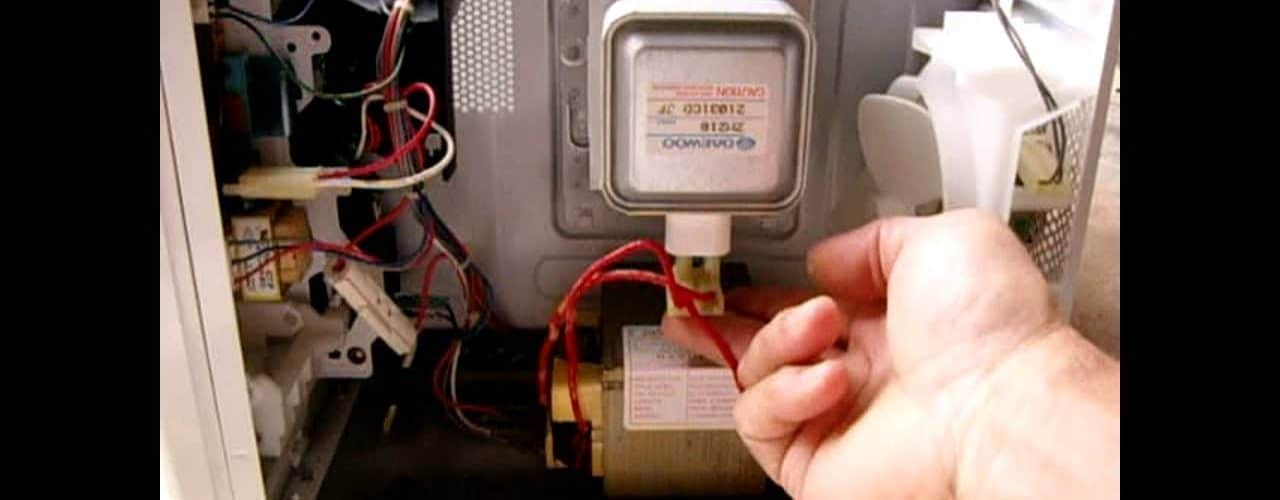Microwaves are among the most impressive scientific achievements created by man and offered to the typical household kitchen. No one would have believed even forty years ago that there would be a viable means of cooking food with neither a fire or an oven involved. But when these modern marvels stop working right, or cease working at all, then help is needed in a hurry. In this article, we discuss several of the various typical problems that microwaves can encounter and the relatively simple solutions for repairing them when they do occur.
Obviously you will need to unplug your microwave before you begin working on it. On top of this you will have to ensure that you properly discharge the microwave’s capacitor. This is a series of terminals which store reserve power for a microwave, and they will shock you if you begin working on the inside of the microwave without first performing this important task. To do this, you will have to attach a wire to the two ends of the resistor.
Then you must attach one wire to the metal part of the screwdriver, while attaching the other end of the wire to the capacitor terminals. Finally, you must touch the other terminal with the end of the screwdriver itself. This will likely create a tiny spark. Should the microwave in question possess three terminals, then follow the same procedure with the middle terminal as well as with the outlying two terminals.
When your microwave refuses to work period, what should you do? There are three internal problems which are likely the cause of this. Before you open up the microwave, you should first check the voltage of the outlet into which your microwave is plugged. Carefully examine the microwave power cord, after unplugging it, looking for any damage, shorts, or evidence of burn marks on the cord.
If these are not the roots of the problem, then it is time to take off the protective shell from the microwave itself. Remove the screws from the back and beneath the microwave so that you are able to slide off the case. Then check off down the list of the following three items: Has the door switch gone bad? Has the fan motor quit working? Could a fuse simply have been blown?
To determine if the door switch has failed, simply find the door switches and take out the leads. Using a volt-ohm meter on RX1, check the terminals. The data you are looking for is a reading of zero when the door is shut and infinity if the door is opened. If the readings are not correct, replace the door switch. Remember to investigate both door switches while you are here.
To ascertain if the fan has stopped working, find the fan and take out the leads. Using your volt-ohm meter on RX1, check the terminals. When you get a result of infinity, it means that the fan has gone bad. It will have to be replaced.
To discover if a fuse has blown out, take out the fuse using a pair of fuse pullers. Put it lying down on a paper towel to prevent it from getting lost. Using a volt-ohm meter on RX1, check both ends of the fuse in question. If your results are not shown as zero, then you will have to change out the fuse with another one which is exactly the same.
Another common problem with microwaves revolve around microwaves which run, but do not cook anything in the process. To check for this problem, examine the thermal cutoffs on both the magnetron as well as the oven itself. Take off one of the leads and using a volt-ohm meter on RX1, check the terminals to see if the result is zero. If you get a result other than zero, replace the thermal cutoffs. Remember to investigate both of them. If the problems are with the transformer or magnetron instead, these will have to be worked on by a trained expert in microwave repair.



